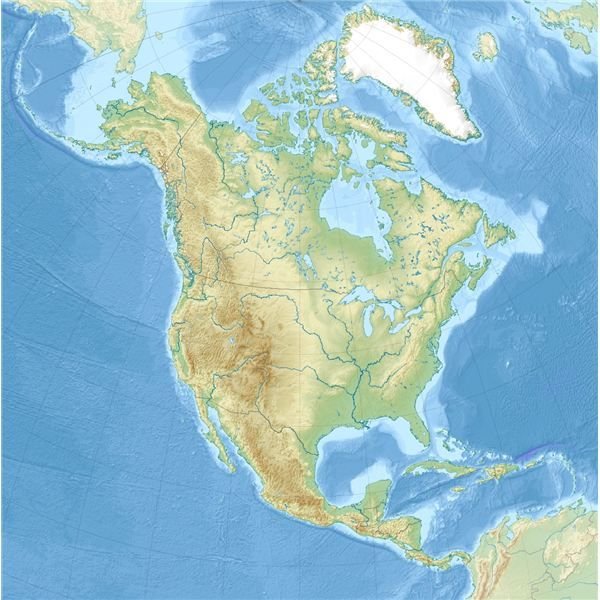Homeschool: Learn When to Study Geography
Recommended Curriculum
Homeschooling has come such a long way that there are more than enough geography resources from which to choose. For the younger grades, you may not need a text or workbook. If you spend some time searching the internet, you’ll find many resources to help teach your child what she needs to learn during each grade. If you wish to purchase a curriculum, here are a few suggestions of history curricula that are highly rated by homeschooling experts.
Maps, Charts, Graphs by Pearson Publishing is a geography curriculum consisting of eight levels- A through H. Starting off slowly in the younger years it begins with simple concepts that are easy for a young child to understand, then progresses through high school. Levels G and H are appropriate for high school. Each book costs about $9.00.
A Child’s Geography by Ann Voskamp is a Christian curriculum that works well with A Child’s History of the World by V.M. Hillyer but would also work well with any other classical history curriculum. In the early years, these books provide opportunities for hands on learning, art projects, narration and note-booking.
Runkle Geography (high school) is, according to Cathy Duffy’s Top 100 Homeschool Curriculum, one of the best geography curricula for high schoolers. In her review Cathy Duffy says “Brenda Runkle’s World Physical Geography was the first geography text to convince me that it is possible to produce a geography textbook that isn’t designed to put students to sleep.”
Elementary School
Wondering when to study geography in homeschool? Elementary school is the time to begin teaching geography to your students. Start by teaching basic skills in kindergarten, such as the purpose for maps and globes, how to identify rivers, lakes and mountains on a map and how to locate the your town, state and country on the map. Kindergarteners should also be able to identify the Atlantic and Pacific Oceans, north and south poles and identify the seven continents.
When your child reaches first grade, review the geography skills learned in kindergarten and build on them further. First graders should learn how to use a map key, identify north, south, east, and west. They should identify major oceans, the equator, both the northern and southern hemispheres. They can also begin learning geographical terms such as island, delta and gulf.
Second graders should continue practicing what they have already learned. In addition, they should learn to locate their country of residence and the surrounding countries. For instance, a child living in the United States should be able to identify the United States, Canada, and Mexico. Teach new geographical terms such as prairie, desert, oasis and valley.
In third grade, students can begin learning to use an Atlas either in book form or online. They should also learn how to measure straight distances using a maps bar scale. Additional geographical terms should be learned, such as channel, reservoir, strait, and isthmus.
Fourth graders should learn to locate the highest mountain ranges, the highest mountains in the world, as well as famous rivers, the Mediterranean Sea, the North Sea and the Baltic Sea. They should be able to locate and name the British Isles. This is the time to begin to learn to read maps using longitude and latitude lines.
In fifth grade, homeschool students should continue to practice skills learned in fourth grade and learn to read a map using coordinates and degrees. They should also learn the time zones, climate zones, the Tropic of Cancer, the Tropic of Capricorb and study the great lakes of the world.
Middle School
Sixth grade students should continue reviewing skills from fourth and fifth grades. In addition, they should study the Arctic Circle as well as the major deserts of the world.
Seventh grade students review skills learned previously and begin studying the geography of Europe. They should learn about various regions, what countries are a part of each region and the major cities within each country. Students should learn about the languages, natural resource and populations of major countries.
Eighth grade students can study the geography of the Middle East, Asia and China. They should learn to locate the countries of these regions and identify the major rivers, mountains, and deserts. The child should learn important facts and history about each area.
High School
By the time a child reaches high school, he should have mastered all skills mentioned previously. This is the time to begin working on more complex geography skills. High school students should work through high school level geography texts and workbooks and will begin learning more advanced map skills such as reading world temperature, history or political maps. Analyzing map data, using city maps, calculating and choosing the best routes for travel should are also covered.
By the time a child finishes high school he should learn the skills outlined in the National Council for Geographic Education’s geography standards as outlined on their website. Beginning a solid geography curriculum at an early age, then continuing to study geography should help a student accomplish this goal.
References
Core Knowledge.org: 2010 Core Knowledge Sequence: https://www.coreknowledge.org/mimik/mimik_uploads/documents/480/CKFSequence_Rev.pdf
National Council for Geographic Education: Geography Standards: https://www.ncge.org/i4a/pages/index.cfm?pageid=3314
Cathy Duffy Homeschooling Curriculum Reviews: https://cathyduffyreviews.com/
